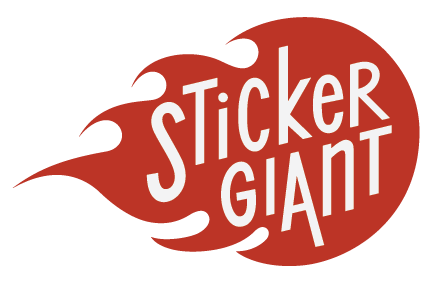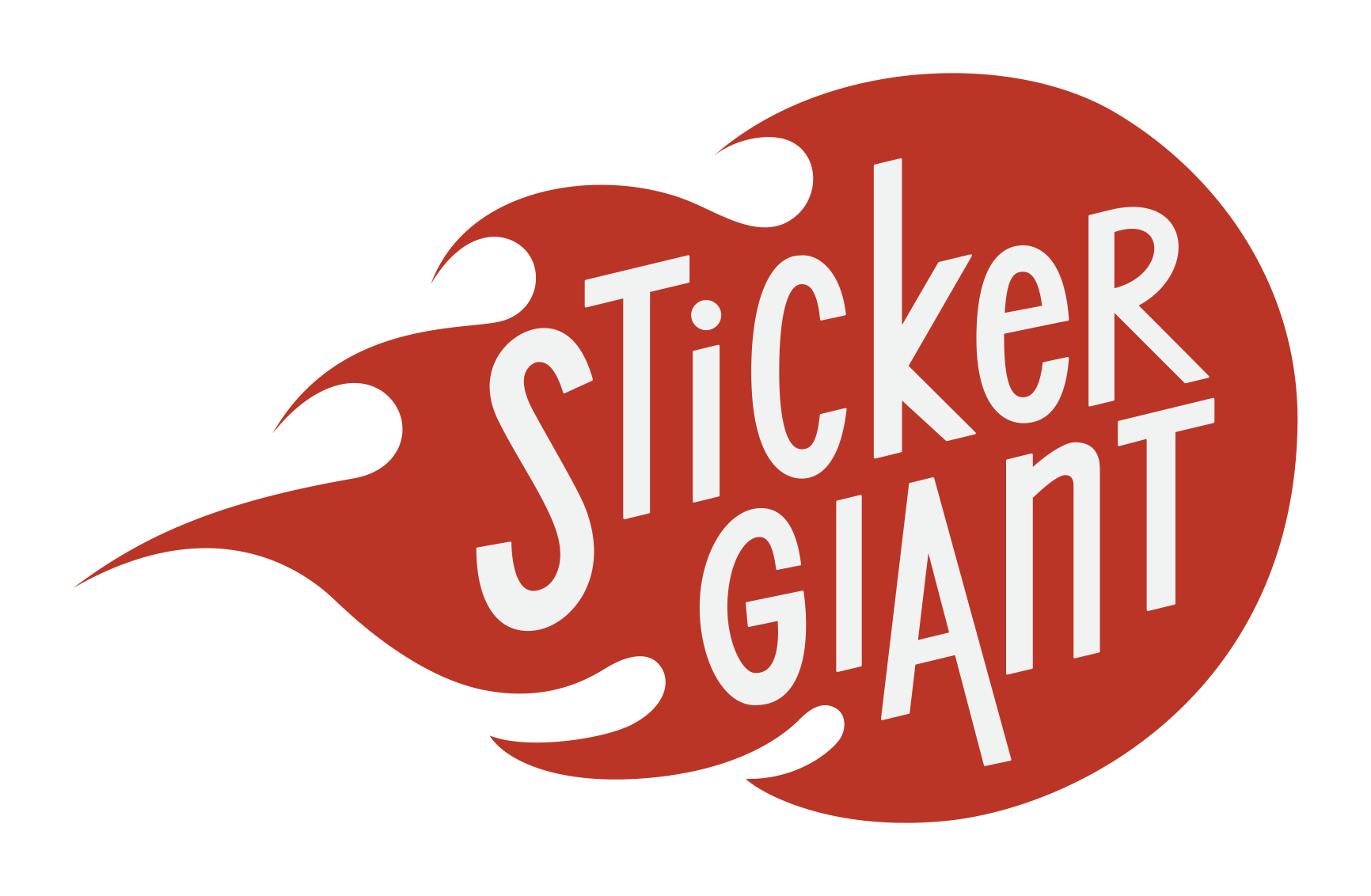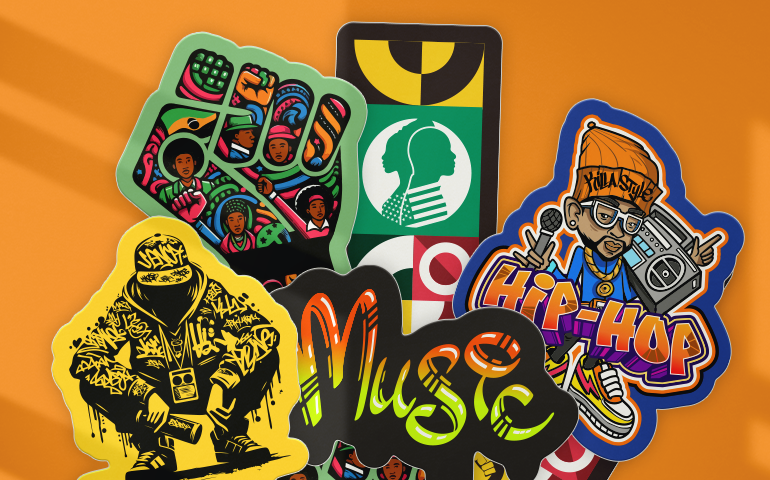From the bold imagery of hip-hop album covers to the underground world of street art, stickers have played a crucial role in amplifying Black voices in music, art, and culture. They serve as a powerful tool for self-expression, branding, and activism—whether on a rapper’s mixtape, a street pole covered in graffiti, or a record store window promoting the next big artist.
For decades, Black musicians, artists, and grassroots movements have used stickers to spread messages, build brands, and create movements. In this blog, we’ll explore how stickers have helped shape Black culture—from the rise of hip-hop to the streets of major cities where sticker art serves as a form of rebellion, visibility, and empowerment.
Hip-Hop Stickers: Branding the Sound of a Generation
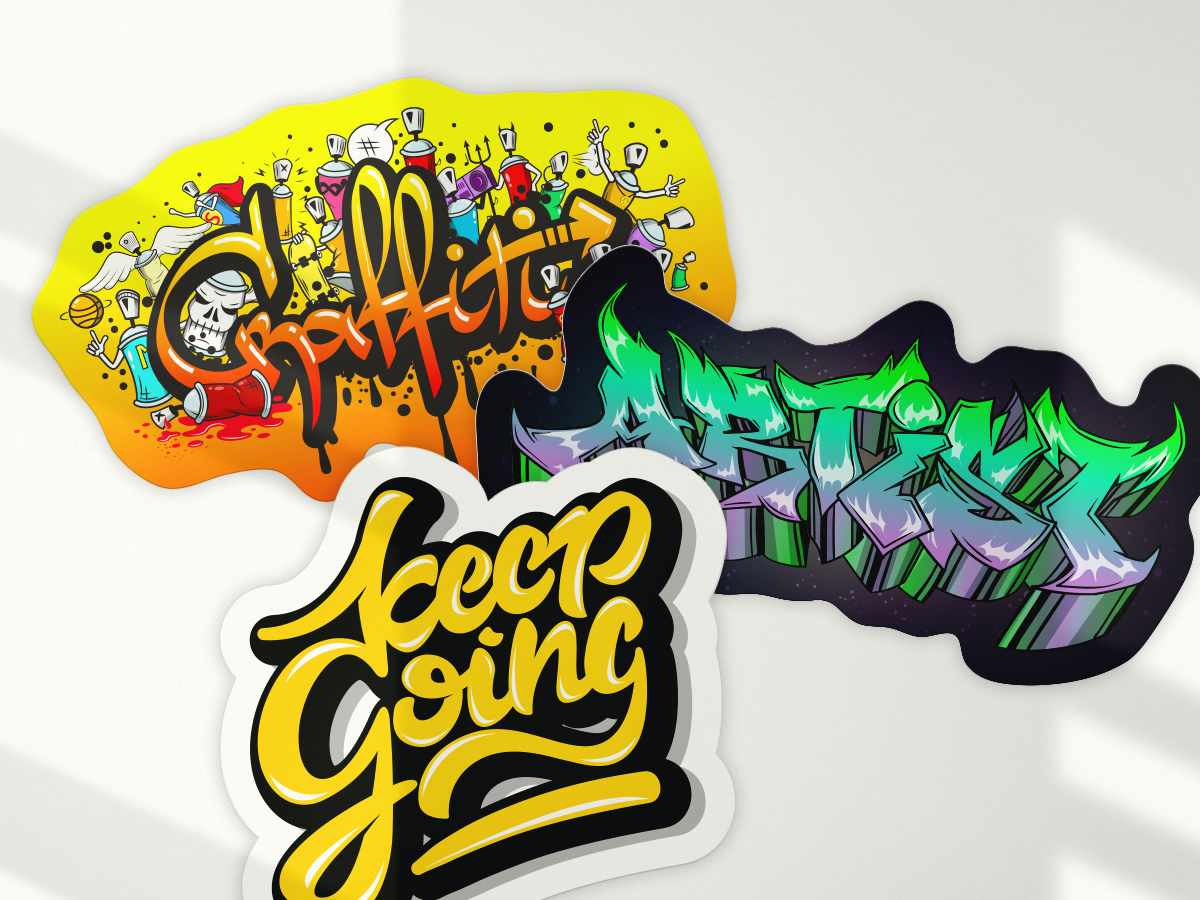

1. Mixtapes, Album Promotion, and the DIY Hustle
Hip-hop artists have long relied on street-level marketing to break into the industry, and stickers have been a crucial part of that grassroots approach. In the early days, unsigned rappers would hand out mix CDs with custom stickers on them, using eye-catching graphics to attract listeners. These stickers turned into mini-billboards on street corners, record store windows, and club walls, ensuring that an artist’s name would be remembered.
Some of hip-hop’s biggest legends, like Wu-Tang Clan and Public Enemy, leveraged stickers as part of their promotional campaigns, sticking their logos on anything and everything to build brand recognition before social media made viral marketing easy.
2. DJ Culture and Graffiti-Inspired Branding
DJs and producers also used stickers as part of their brand identity. Whether it was the unmistakable Run DMC logo or the iconic Bad Boy Records emblem, stickers were slapped onto turntables, crates, and tour buses, becoming symbols of an artist's influence.
Additionally, graffiti art—a close relative of hip-hop—found a home in sticker form. B-boy culture, breakdancing crews, and underground rap collectives used stickers with bold lettering and custom artwork to promote their names and claim space in the streets.
Music Promotion Stickers: From Vinyl Shops to Concert Venues
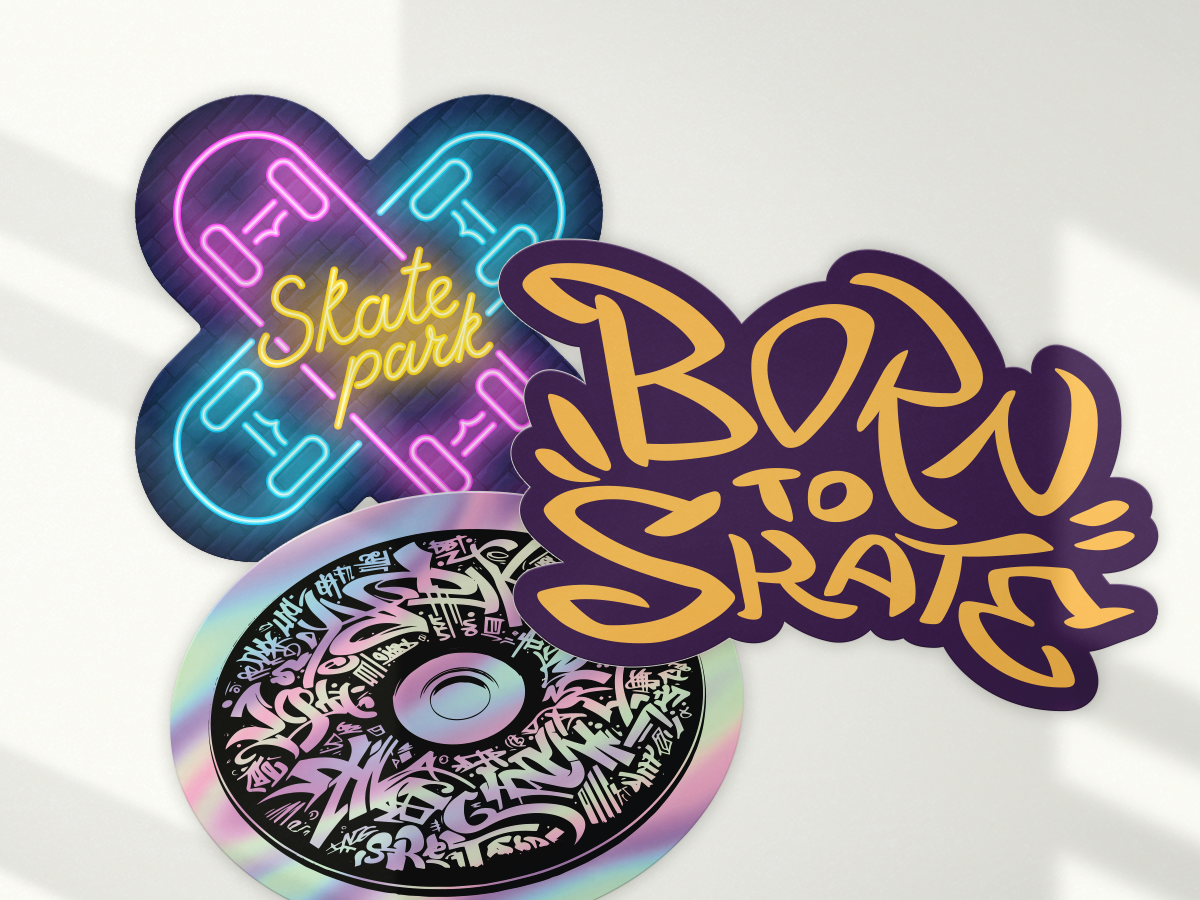

1. The Power of Hand-to-Hand Marketing
Before digital ads and social media, music promotion happened face-to-face. Street teams for artists and record labels distributed stickers outside of concert venues, in skate shops, and at hip-hop festivals. These stickers created organic exposure, covering public spaces like telephone booths, bathroom stalls, and subway stations with messages about upcoming shows and new music releases.
2. Iconic Sticker Branding in Black Music
Stickers also became a signature of Black musicians across genres. Think of the instantly recognizable OutKast logo, the classic “Parental Advisory” sticker on explicit albums, or the unforgettable Death Row Records branding.
Independent Black artists continue to use stickers today as an affordable, effective way to promote their work. Whether it’s an R&B singer selling custom stickers at a merch table or a rapper including stickers with their vinyl packaging, stickers remain a staple of music marketing.
Street Art and Sticker Culture in Black Communities
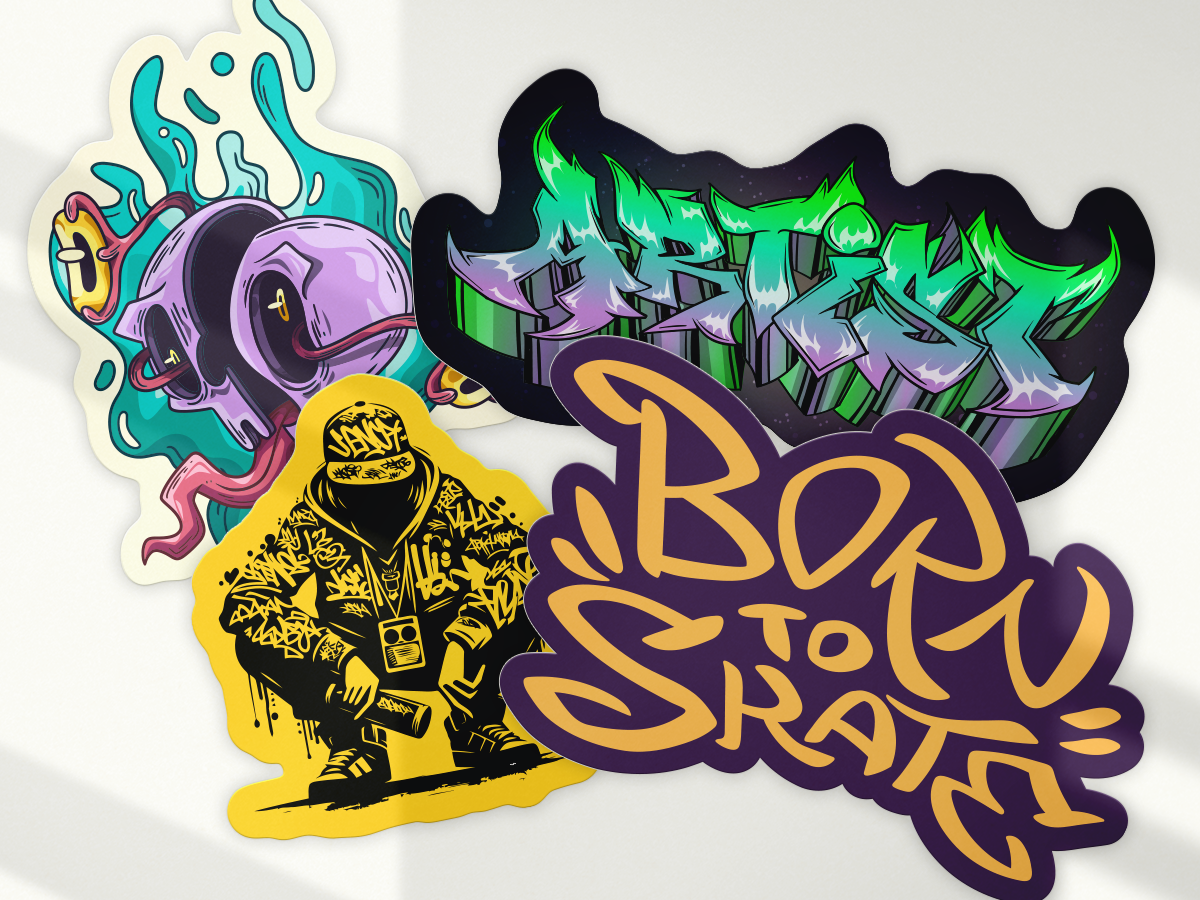

1. Graffiti, Stickers, and Visual Protest
Black communities have long used street art as a form of resistance and storytelling. Stickers have become a natural extension of this—used to spread messages about social justice, identity, and empowerment.
During the Black Lives Matter movement, stickers with slogans like “Say Their Names” and “End Police Brutality” became a way for activists to claim public space and spark conversation. These stickers often featured bold typography and striking imagery, drawing from the visual language of protest posters and graffiti.
2. Black Artists and Sticker-Driven Art Movements
Many Black artists have integrated stickers into their work as a means of reaching a wider audience. Shepard Fairey’s Obey movement drew inspiration from hip-hop and Black street art, while contemporary Black artists like Hebru Brantley and Cey Adams have used stickers as part of their artistic storytelling.
Street art collectives in cities like New York, Atlanta, and Los Angeles have also embraced sticker culture, creating high-quality designs that blend graffiti aesthetics with political messaging. These stickers allow artists to “tag” spaces in a way that is mobile, temporary, and accessible to a broad audience.
Why Stickers Still Matter in Black Culture Today
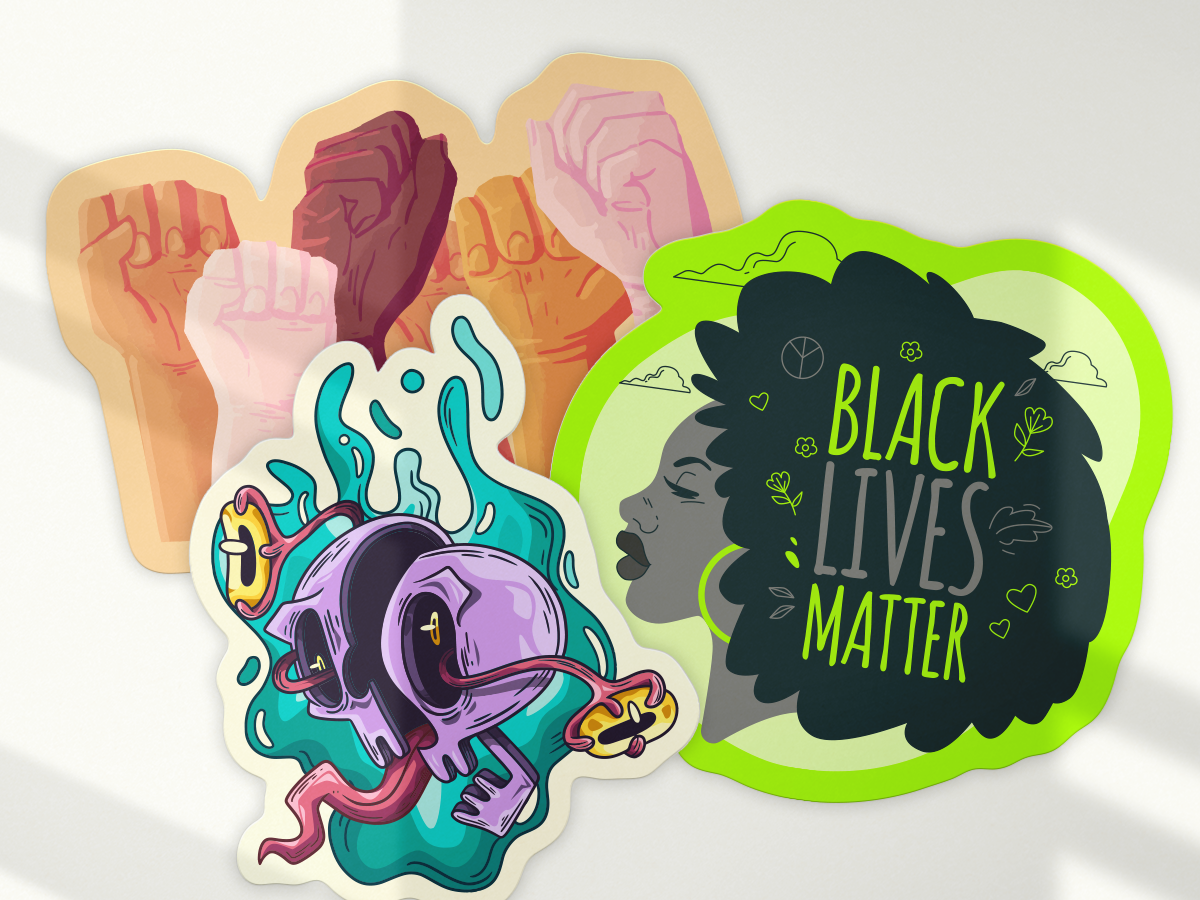

Stickers have always been more than just promotional tools—they are a form of self-expression, activism, and branding. Whether used to promote a mixtape, spread a message of empowerment, or add to the legacy of hip-hop’s visual storytelling, stickers continue to play a role in Black culture.
3 Ways to Use Stickers to Amplify Your Voice:
For Artists & Musicians: Use custom stickers to promote your brand and build your fanbase.
For Activists & Movements: Spread awareness by distributing stickers with bold messages.
For Collectors & Creators: Embrace sticker culture as a form of street art and self-expression.
To explore more stories of creativity, identity, and impact through stickers, visit our Ethnic Voices page, where we highlight how Black artists, entrepreneurs, and changemakers use stickers to amplify their voices and communities.
